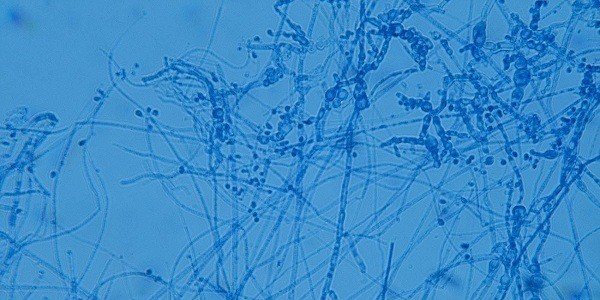Rubrophytia

Rubrophytia /rubromycosis, rubrophytosis, mycosis caused by red trichophytons/ – a chronic infectious disease caused by the fungi of the genus trichophytes, characterized by a frequently recurring course with mainly affecting the skin and nail plates of hands and feet and less often the skin of the torso and limbs in the area of large folds – gluteal and axillary.
The disease is quite widespread in the countries of the Far East, Southeast Asia. After the Second World War, the disease spread to European countries and America.
Only people suffer from rubromycosis, as age and gender do not affect the incidence rate.
The development of the disease is determined by a number of factors such as:
• Exogenous /environmental factors that affect the skin /:
– Increased activity of the sweat glands;
– Excessive dryness of the skin;
– Frequent violation of the skin surface;
– Calluses and swelling of the skin of the feet;
– Failure to observe the rules of personal hygiene – walking barefoot in public bathrooms, gyms, showers, wearing foreign shoes.< /p>
• Endogenous /factors that lead to a weakening of the body’s resistance to various infections, due to the peculiarities of the body itself/:
– Endocrine diseases – reduced function of the thyroid gland, diabetes mellitus;
– Metabolic disorders – obesity;
– HIV-positive, as well as in the presence of AIDS;
– Oncological pathologies;
– The period after organ transplantation;
– Prolonged treatment with antibiotics, chemotherapy drugs, hormones;
– Chronic diseases of internal organs;
The treatment of the disease is usually of a rather long duration, since the pathological process is chronic with frequent relapses. However, the prognosis is favorable.
What are the causes?
The cause of the disease is Trichophyton rubrum. It is transmitted from person to person in the presence of endogenous and exogenous factors for infection.
Infection occurs through direct contact with a rubromycosis patient, as well as through contact with his personal items such as a towel, bathrobe, pumice stone, nail file, scissors. Infection occurs less often when visiting swimming pools, showers, baths.
What are the symptoms?
The incubation period is not exactly established. The beginning of the development of the disease depends on the amount of the causative agent that got on the skin and on the state of the body’s immune system.
Affecting the feet
The skin on the soles of the feet turns deep red. The stratum corneum of the skin thickens, becomes rough, light furrows begin to be easily noticed. The skin surfaces become dry, and white scaling appears in the area of the folds.
The focus of infection completely covers the surface of the foot, the lateral and rear surfaces of the foot, the folds between the toes and the nail plates.
There are 3 types of rubromycosis of the nails:
• Normotrophic – white-yellow spots and stripes appear on the lateral surfaces of the nails, gradually changing the color of the entire nail.
• Hypertrophic – the color of the nail plates becomes gray-brown as they suddenly thicken, lose their shine, darken and become brittle. In some cases, it is possible to observe destruction of the nails starting from their lateral surface.
• Onycholytic – the affected part of the nail becomes grey-brown and separates from the nail bed.
Treatment of rubrophytia
As a therapy for this disease, antifungal preparations such as lamisil, clotrimazole are prescribed for local treatment.
In addition, with rubromycosis of the nail plates, the appointment of antimycotic drugs for internal administration is required.



